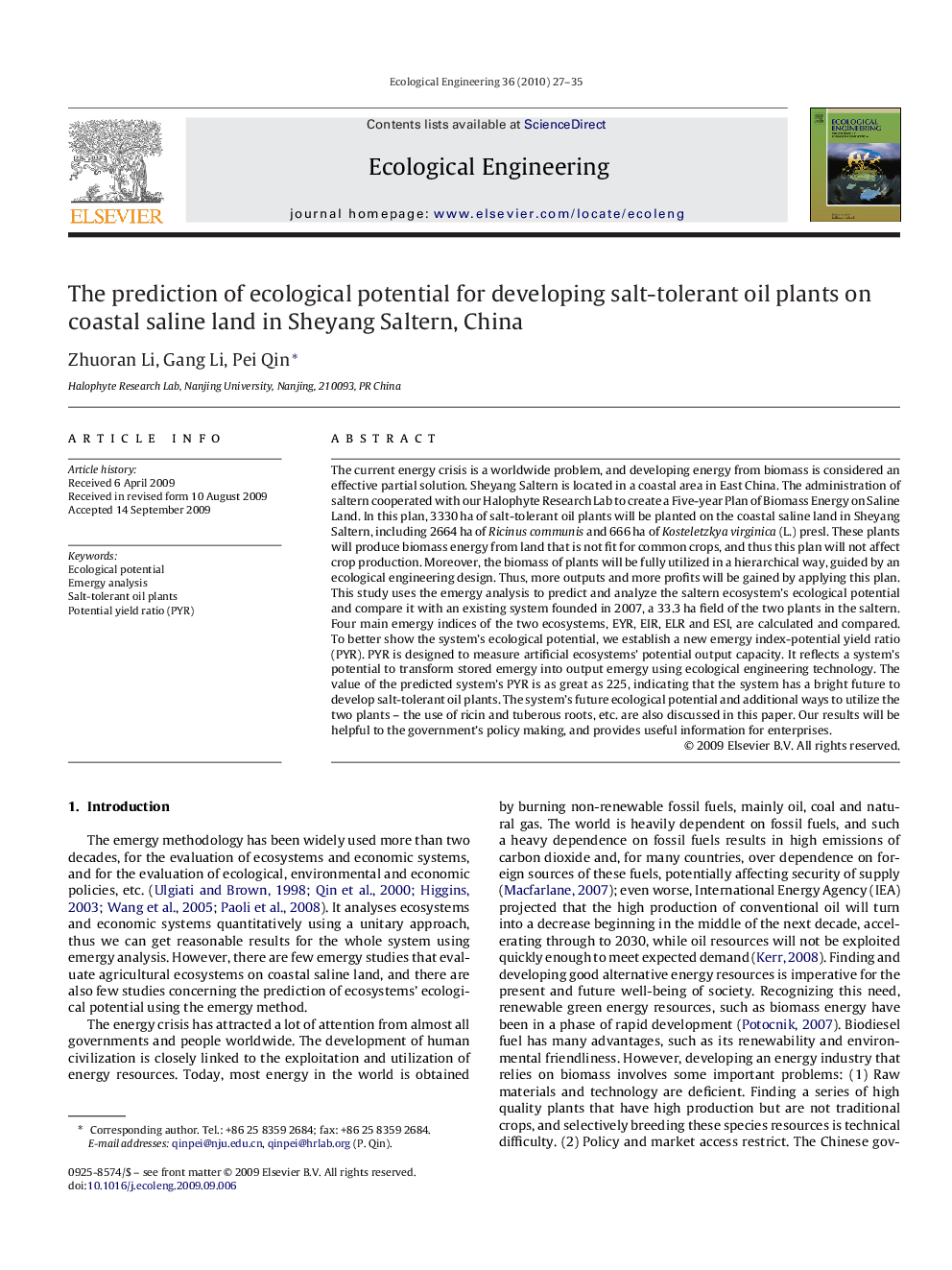| کد مقاله | کد نشریه | سال انتشار | مقاله انگلیسی | نسخه تمام متن |
|---|---|---|---|---|
| 4390817 | 1305195 | 2010 | 9 صفحه PDF | دانلود رایگان |
عنوان انگلیسی مقاله ISI
The prediction of ecological potential for developing salt-tolerant oil plants on coastal saline land in Sheyang Saltern, China
دانلود مقاله + سفارش ترجمه
دانلود مقاله ISI انگلیسی
رایگان برای ایرانیان
موضوعات مرتبط
علوم زیستی و بیوفناوری
علوم کشاورزی و بیولوژیک
بوم شناسی، تکامل، رفتار و سامانه شناسی
پیش نمایش صفحه اول مقاله

چکیده انگلیسی
The current energy crisis is a worldwide problem, and developing energy from biomass is considered an effective partial solution. Sheyang Saltern is located in a coastal area in East China. The administration of saltern cooperated with our Halophyte Research Lab to create a Five-year Plan of Biomass Energy on Saline Land. In this plan, 3330Â ha of salt-tolerant oil plants will be planted on the coastal saline land in Sheyang Saltern, including 2664Â ha of Ricinus communis and 666Â ha of Kosteletzkya virginica (L.) presl. These plants will produce biomass energy from land that is not fit for common crops, and thus this plan will not affect crop production. Moreover, the biomass of plants will be fully utilized in a hierarchical way, guided by an ecological engineering design. Thus, more outputs and more profits will be gained by applying this plan. This study uses the emergy analysis to predict and analyze the saltern ecosystem's ecological potential and compare it with an existing system founded in 2007, a 33.3Â ha field of the two plants in the saltern. Four main emergy indices of the two ecosystems, EYR, EIR, ELR and ESI, are calculated and compared. To better show the system's ecological potential, we establish a new emergy index-potential yield ratio (PYR). PYR is designed to measure artificial ecosystems' potential output capacity. It reflects a system's potential to transform stored emergy into output emergy using ecological engineering technology. The value of the predicted system's PYR is as great as 225, indicating that the system has a bright future to develop salt-tolerant oil plants. The system's future ecological potential and additional ways to utilize the two plants - the use of ricin and tuberous roots, etc. are also discussed in this paper. Our results will be helpful to the government's policy making, and provides useful information for enterprises.
ناشر
Database: Elsevier - ScienceDirect (ساینس دایرکت)
Journal: Ecological Engineering - Volume 36, Issue 1, January 2010, Pages 27-35
Journal: Ecological Engineering - Volume 36, Issue 1, January 2010, Pages 27-35
نویسندگان
Zhuoran Li, Gang Li, Pei Qin,